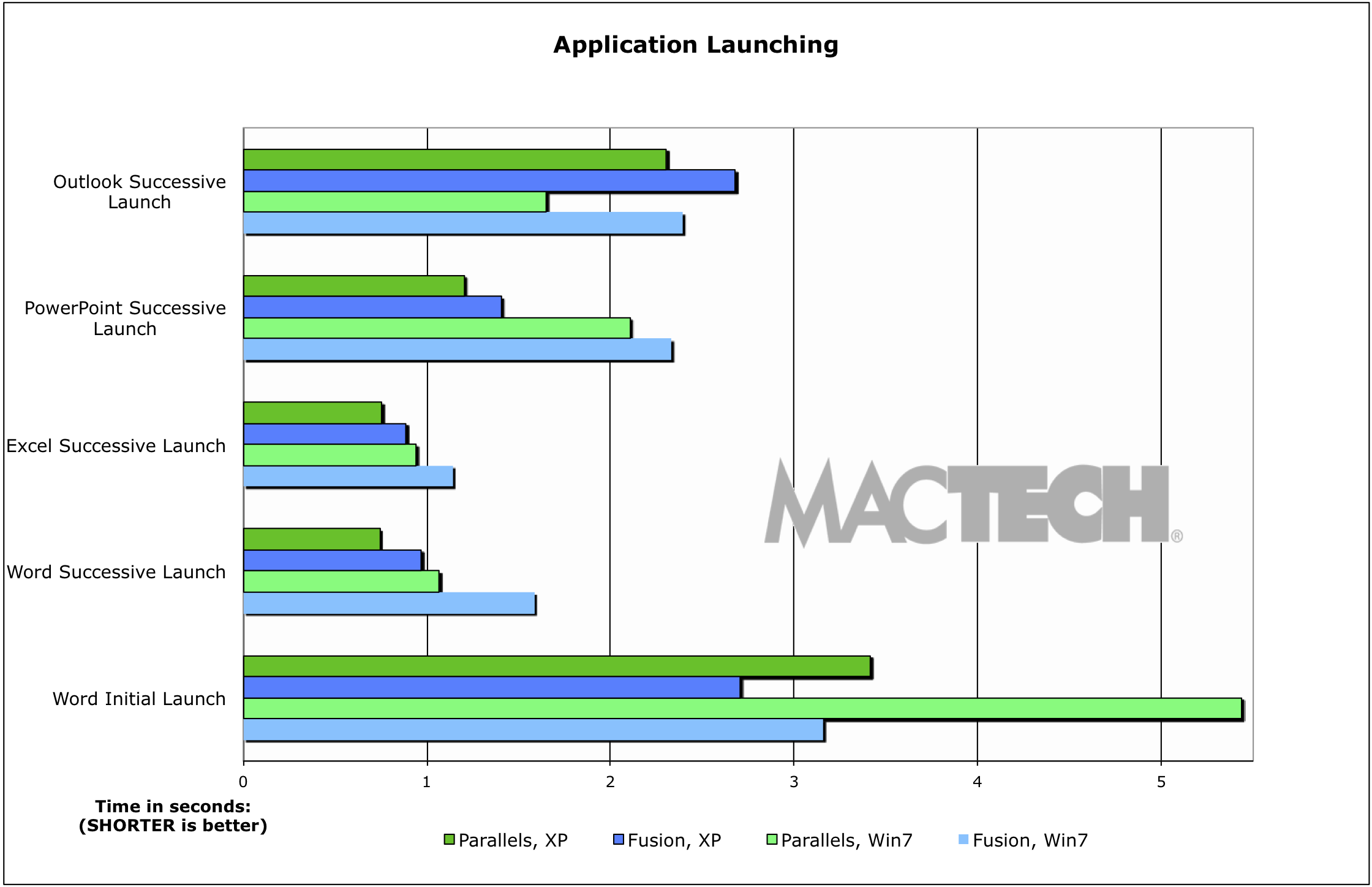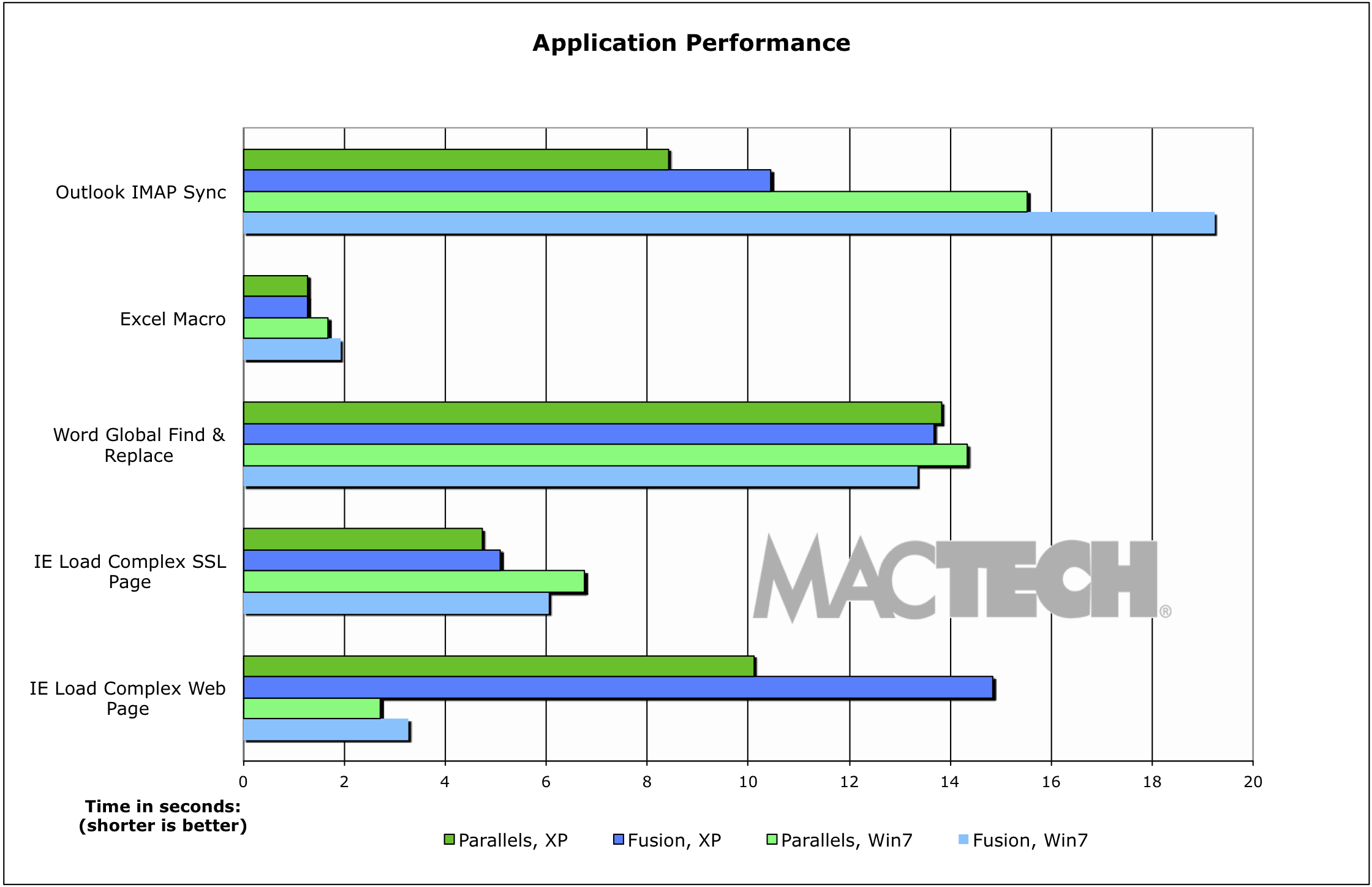Application Launch Test
Here, we tested four of the most common applications used in virtualized desktop environments: Microsoft Office 2010 including Word, Excel, PowerPoint and Outlook. Similar to the OS launch tests, an Adam launch is one where Windows has been completely rebooted, and then given a few minutes to finish its startup process. A successive launch test is done repeatedly without restarting Windows.
Most applications, including these, launch very quickly with the worst performance being under Windows 7 for Adam launches. Even so, launches are so fast on both virtualization products that even the worst case was very usable.

Windows Application Launch Performance
There are a variety of things that happen differently on the Adam (aka initial) launch. For example, caches are set up for fonts, available printers are determined and more. That’s why the successive launches border on close to instantaneous on some of the models.
In all cases, launch times were great from a user experience. It’s nice to see that all the Microsoft Office applications launch (typically) in a few seconds under both Parallels Desktop and VMware Fusion. For the Adam launch test of Microsoft Word, VMware Fusion was faster. For the successive launches in all of the Microsoft Office Suite, Parallels Desktop was faster. Often, it felt nearly instantaneous to a user on the successive launches.
Application Performance Tests
In many cases, applications today perform so well and so fast, even under virtualized environments, that anyone would be pleased for small documents and activities. We focused our efforts on larger tasks that were not only large enough to measure, but will also stress the systems to some extent.
For Microsoft Word, we took a very large document and did a global search and replace of about 95,000 items. For Microsoft Excel, we ran a macro that generated a large quantity of random numbers, and filled cells with them. Finally, for Outlook, we had the application do an IMAP sync with a mail server on the test LAN).

Windows Application Performance
Many web pages are simple enough that they load very quickly. So, to test the speed of Internet Explorer, we created a large, complex page in HTML loaded from a local LAN web server. The page was very long, but used only common HTML elements, (no JavaScript, etc.).
The tests performed used the same web page, with and without SSL, and there was a difference. We found it quite bizarre that Internet Explorer under XP was so much slower on a non-SSL web page than both the SSL version of that page, as well as Windows 7. At first, we thought we had made an error and double-checked it, but didn’t find any issues. We also confirmed that it was completely consistent across all models of Mac, and both VMware Fusion and Parallels Desktop. As a result, we’re attributing that to something related to IE in those situations.
In our Outlook IMAP sync, Parallels was significantly faster both from a time recorded and user perception level. For the Excel macro test, Parallels was slightly faster, but they both ran so fast, it was unperceivable for the user. In our global find and replace in Word, VMware Fusion was slightly faster.
| Packed schedule. Learn from the best. Meet new people. Network with peers. One day semimar for techs and consultants who support home users, small office, and small to medium size business. Invest in yourself. Click here for more info. |
 |
